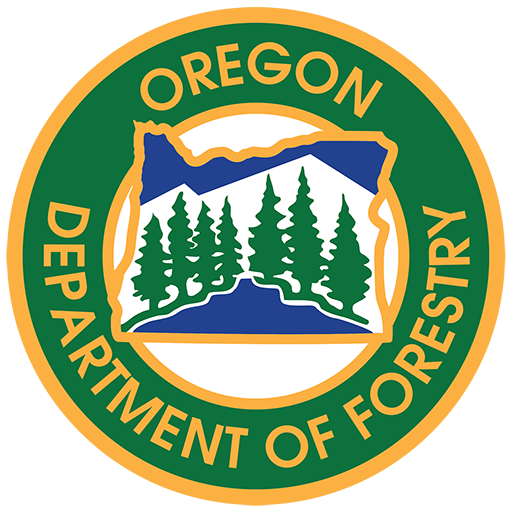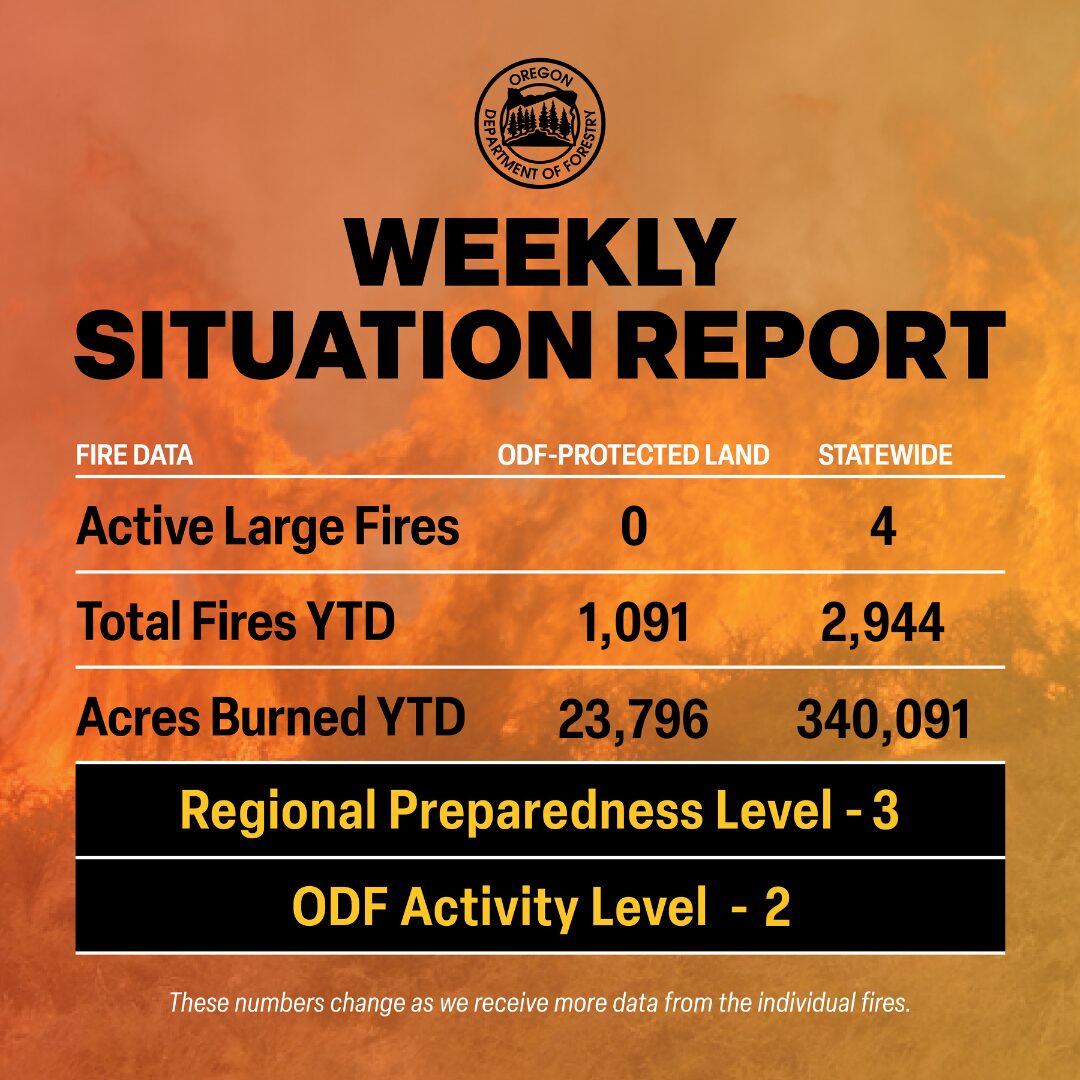ODF Complex Incident Management Teams
- Team 2 on rotation
- Team 3 is on standby.
- Team 1 is on rest.
ODF Priority Fires
| FIRE NAME | TOTAL ACRES | ODF ACRES | CONTAINMENT | LOCATION | COMMAND |
| Moon Complex | 18,316 | 0 | 10% | 12 miles NE of Agness | NW Team 13 |OSFM Green Team |
| Emigrant | 33,096 | 0 | 49% | 24 miles SE of Oakridge | RM Team 1 |
| Foley Ridge | 497 | 0 | 56% | 7 miles SE of McKenzie Bridge | IMT 3 |
| McNamee | 2,500 | 0 | 0% | 7 miles south of Antelope | ICT 3 |
*These numbers may change as we receive more data.
There are approximately 1,897 personnel assigned to the 4 large fires across the state, not including many of the local and agency government employees, landowners, forestland operators, and members of the community who are contributing every day.
Initial attack remains ODF’s top priority.
Prevention: Even with lower temperatures and intermittent rain, fuels remain very dry with the potential for a fire to start and grow. Thus far in the season, there have been 1,091 fires on ODF-protected lands – 671 of which have been human-caused. By taking a few extra steps, you can help prevent the next wildfire in Oregon.
Wildfire prevention means:
- Debris burning remains the number one cause of human-caused fires in Oregon and is prohibited during fire season. Cover your pile and wait until fire season is declared over before burning. A dry, covered pile is cleaner and safer to burn in the late fall and winter.
- Check local restrictions before lighting a camp or warming fire to see if it is allowed.
- Never leave your campfire or warming fire unattended.
- Make sure your campfire or warming fire is OUT COLD. That means drowning it with water, stirring the ashes, and repeating that process until it is cold to touch. If there is any heat coming off the embers, then it can reignite later.
- Don’t park your car over dried grass, and make sure your vehicle or ATV is regularly serviced. More than 100 fires have resulted from vehicle use in 2025.
- Make sure your tow chains are not dragging. The metal hitting asphalt while driving can throw sparks into dry grass on the side of the road.
Several ODF districts have updated their fire danger levels recently; however most of the state remains between moderate and high fire danger. Visit Oregon.gov/odf to find local fire restrictions and keeporegongreen.org for more wildfire prevention tips.
Weather: Low pressure over the Pacific will send a series of fronts across the Geographic Area each day through Wednesday, followed by the parent upper low moving inland Thursday. Rainfall early in the week will heavily favor the Coast Range and Olympics, with amounts dropping off quickly eastward toward the Cascades and east side. Wet thunderstorms will occur each day but are not expected to significantly increase the risk of new large fires. Moderately strong southerly wind gusts will affect coastal areas, especially Tuesday and Wednesday, with south to southwest winds spreading across the Cascades and into southern Oregon. Despite the wind, cooler temperatures and much higher humidity will help mitigate fire weather concerns, particularly along the coast.
ODF Highlight: All three ODF CIMTs are rested and ready to respond to any emergency. For those that don’t know, our complex incident management teams are a group of specially trained and qualified personnel who together provide the type of highly adaptable and coordinated infrastructure necessary to manage elements associated with all types of emergencies. While the majority of team deployments are wildfire incidents, ODF’s IMTs are all-hazards qualified and have responded to a variety of other emergencies over the years.
Resources
- ODF wildfire blog and Public Fire Restrictions/Danger Levels map
- Regional situation report and national situation report
- Inciweb (information, photos, videos, and maps from specific incidents)

